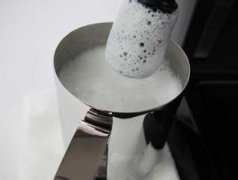An Analysis of the Common terms of High-quality Coffee
Coffee is English for coffee, French and Spanish for cafe, Italian for cafe, German for kaffe.

For beginners, for a lot of commonly used nouns do not understand, because there is no systematic understanding, so it is difficult to understand when listening to others talk about, the following I say some commonly used nouns, and through these nouns to do a ramble, so that everyone has a systematic understanding of coffee:
Part 1: Coffee classification nouns
Black coffee: Many people think that coffee without sugar and milk is black coffee, which is a misunderstanding. In fact, black coffee refers to coffee made directly from coffee beans, without milk, etc., which will affect the original taste of coffee. Instant coffee is not black coffee.
Specialty coffee: Coffee that is mixed with something else to produce a drink that is acceptable to most people is called specialty coffee or fancy coffee.
Instant coffee (Instant coffee): The best instant coffee preparation process today is: coffee beans are roasted and fragrant, the aroma components are extracted by SFE-CO2 process, the caffeine is extracted by changing the SFE-CO2 process conditions, and the residue is heated and extracted with water and then sprayed dry. The aroma component, refreshing component caffeine and water-soluble component obtained by separation are recombined into instant coffee. Because there are too many kinds, individuals are not interested in it, so they don't say more about it one by one.
Among them, black coffee is divided into three types: variety coffee, comprehensive coffee and product coffee:
Origin coffee: Origin coffee is the use of coffee beans from a single coffee origin to make coffee, such as Blue Mountain, Colombia and so on seen in coffee shops.
Blended coffee: Blended coffee is also known as blended coffee. The blended coffee term is MIXING, which means blending. Because each single bean coffee has its own sour, bitter, sweet, aromatic characteristics, except Blue Mountain, no coffee is very uniform, so each variety of coffee beans mixed in different proportions, can produce different flavors. The signature coffee of all coffee shops is also mostly a blend of coffee that you create yourself, such as the "Mamba"(Mantenin Brazilian Santos blend) that you see in the better coffee shops.
Product coffee: Product coffee is coffee beans produced using different coffee beans through a special process of the manufacturer rather than a single roast. For example, decaf coffee and decaf coffee are common nowadays. Although such coffees have lost their original meaning of drinking black coffee, they are still black coffee.
Beans: The coffee in the world basically belongs to Arabica(Arabica) and Robusta(Robusta).
Arabica: 3/4 of the coffee producing areas in the world are Arabica species, which are also descendants of coffee varieties transplanted from Arabia. If you see Arabic species written, it also refers to this series. The coffee grown in some of the world's top places is Arabica.
Robusta: mostly grows below 600 meters above sea level and comes from Congo, Africa. It is mainly grown in Africa and Asia.
Harvest treatment:
Just ripe coffee is called coffee cherry, the outside of the bean is pulp, there are two ways to process coffee beans, called exposure method and washing method.
Exposure method: natural drying, direct coffee cherries in the sun for 15-20 days, during which time continue to stir, until the dehydrated pulp peel and coffee beans separated. Modern coffee beans are also separated after being exposed to sunlight for a few days and then dried in a machine at 45-60 degrees Celsius.
Water washing: Water washing is a more expensive treatment. The process is: cleaning coffee cherries--soaking--separating pulp--fermenting--drying--peeling. This is a relatively fine process, the coffee beans obtained look very shiny, more used for good origin beans.
Now, when you hear someone offer you coffee, say,"All my coffee is washed Arabica..." You know what that means.
Part II: Nouns of origin
The following is a description of the world's more famous origin coffee, beginner coffee, just need to know some of the most famous beans, I do not want to be too detailed, only pick the beans produced by the famous producing countries, such as Vietnam, where the output is large but only produces garbage coffee, do not mention:
Brazil:
Santos: also translated as Santos, full name Bourbon Santos
Colombia:
Medellin
Armenia
Manizales
These three are often referred to collectively as "Colombia" in cafes because they are never separated when exported, and are called MAM.
Yemen:
Mocha (Moka, Mocha), please note here, there is also a special coffee drinking method called mocha, which is completely different.
Indonesia:
Mandheling
Ankola
Java
Java
Jamaica:
Blue Mountain
Jamaica High Mountain
Kenya AA
Nairobi
Hawaii
Kona
Part 3: Baking Nouns
Coffee beans must be roasted and ground before they can be cooked in various ways, and depending on the characteristics of different coffees, different degrees of roasting are used, which is why we see coffee beans with different depths of color.
The world's leading baking categories are:
Light, medium, dark, and verydark
But professional baking is more complicated. The above four kinds of baking are subdivided into eight kinds from light to deep:
1。light roast
2。cinnamon baking
3。medium roast
4。high baking
5。City Baking
6。Citywide baking
7。French Roast
8。Italian baking
Part 4: Taste nouns
Now that we are talking about the taste proper nouns of black coffee appreciation, in fact, these should be written in the more in-depth part later, but since this article is titled with noun explanation, it will roughly say:
Black coffee connoisseur's taste proper noun, wine loving friends will find, and wine connoisseur is quite similar to:
Clean coffee is not earthy, wild, and has no major flaws or unpleasant characteristics.
Balance has sufficiently complex and interesting features, but none stand out.
texture, Mouthfeel Texture refers to the thick, sticky feel of coffee in the mouth, which is approximately proportional to the amount of colloidal suspension in the coffee. Because the texture is felt throughout the mouth, we use the term "rich" to describe thick coffee, and vice versa.
Complexity (Complexity) refers to the coexistence of different levels of characteristics in the same cup of coffee, high complexity, indicating that there are many kinds of sensory stimuli that can be felt; it should be noted that these feelings include aftertaste, not necessarily limited to the feeling of drinking.
Depth is a subjective adjective that refers to resonance and influence beyond sensory stimuli, which may be caused by some detailed feelings or complex interactions between different feelings.
Bitterness is characteristic of deep-baked beans and, like sourness, is not necessarily unpleasant, but is felt throughout the mouth and throat, not just on the tongue. Most people who drink American coffee or espresso coffee may use the word "strong" to describe this characteristic.
Sweet has two meanings. The first is to feel the sweet stimulus, which is generally called sweetness; the other means that between deep city baking and Espresso baking, there is a rich, mellow taste associated with some astringent substances, reminiscent of sugar; this tongue tip does not have to react.
Smooth refers to a sweet Espresso that is slightly sour and bitter, with a little sugar and can be drunk comfortably without milk.
Acidity (Acidity) coffee intake, light taste left on the tip of the tongue. The word "sour" seems to sting the eye, in fact, coffee beans fruit flavor and fresh vitality, just like wine, are contained in its sour. Fresh coffee exudes acidity, with fruit aroma, just like lemon, grape, apple and other fruits contained in the natural fruit acid, taste pleasant and fresh.
Aroma The aroma of coffee in the air. From roasting, grinding, to brewing, coffee beans release their aromas at every stop on their long journey. Therefore, you may wish to use your sense of smell, along with coffee, experience this aromatic journey.
Flavor (Flavor) series of the above three, collage into the coffee impression. Some coffee flavors are diverse, sour, sweet, bitter, and some are extremely sour, completely occupying your sense of smell and taste. Some people are used to using "feeling" to dominate the judgment-does coffee have its own style? Does it have a forest or fruit aroma? Is the temperament gentle or masculine? This is the most intimate and sensual stop in all the tasting process.
Important Notice :
前街咖啡 FrontStreet Coffee has moved to new addredd:
FrontStreet Coffee Address: 315,Donghua East Road,GuangZhou
Tel:020 38364473
- Prev

Selection of coffee utensils for high-quality coffee
1. American electric drip kettle features: easy to operate (you can make a pot in 2-5 minutes). It is suitable for nervous friends in the office and super lazy people who don't care about the taste of coffee. Features: easy to operate, simple, quick and easy to master (done in 2-5 minutes). It is also suitable for office friends and super lazy people to use French pressure.
- Next

Boutique coffee utensils French filter pot for brewing coffee
French Press is directly translated as French press or French filter press, and some people call it filter press. It is a kind of simple, light and convenient cooking equipment. As long as the coffee beans are fresh, French pressure can also make a cup of mellow coffee. French pressing equipment: glass cup: where coffee powder is mixed with hot water. Filter: there's a metal filter, and there's a pressure bar for you.
Related
- Beginners will see the "Coffee pull flower" guide!
- What is the difference between ice blog purified milk and ordinary milk coffee?
- Why is the Philippines the largest producer of crops in Liberia?
- For coffee extraction, should the fine powder be retained?
- How does extracted espresso fill pressed powder? How much strength does it take to press the powder?
- How to make jasmine cold extract coffee? Is the jasmine + latte good?
- Will this little toy really make the coffee taste better? How does Lily Drip affect coffee extraction?
- Will the action of slapping the filter cup also affect coffee extraction?
- What's the difference between powder-to-water ratio and powder-to-liquid ratio?
- What is the Ethiopian local species? What does it have to do with Heirloom native species?

